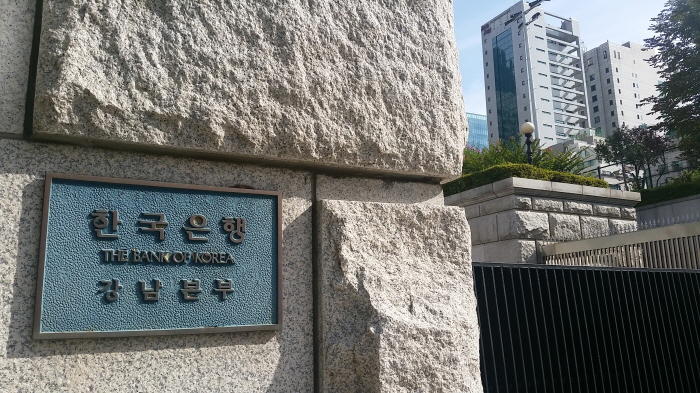South Korean central bank kept its policy rate on hold at 1.5%, on par with expectations. The rate decision was non-unanimous for the second continuous month. One MPC board member again voted to lower the rate. The MPC's March statement was slightly more dovish than February's statement. Even if the Board's assessment of the US economy was slightly upgraded the Korean outlook was slightly more wary.
According to the central bank, the trend of fall in exports and the weakening rebound of domestic demand activities are continuing as compared to February's assessment that consumption had shown signs of slight weakening. The BoK continues to see that the confidence of economic agents has been sluggish and now assesses the uncertainties to the economic growth path to be "high" now, as compared to its last month's assessment of "have increased".
Meanwhile, the central bank views homes sales and leasehold deposit rates indicating a "low rate of increase" and sees bank consumer lending sustaining "a trend increase at a level exceeding that of recent years".
BoK Governor Lee's comments had a more balanced tone, similar to last month's. Lee projects the domestic demand to rebound with the help of government policies. Even though he recognised that there has been an increase in the downside risks and that uncertainties are "higher than ever", he said that the central bank's economic assessment has not changed from February.
Lee, talking about market conditions, said that the financial volatility has alleviated slightly. He repeated that financial stability and growth are equally significant to the central bank. He affirmed that the BoK's view on consumer debt continues to be the same and high consumer debt still requires to be controlled. In all, Lee believes that the present rate of interest is low enough to help the economy and that the impact of a rate cut on the economy will be restricted due to economic uncertainties.
There is slightly more uncertainty regarding the BoK's course of action amidst the sighs that economic growth is slowing below the central bank's forecast. Changes in policy statement imply worsening of recent data, mainly industrial production in January. Even if policymakers' comments imply t hat production data in February rebounded slightly, continuous weak external conditions suggest that the overall trend will continue to weaken.
The BoK, is expected to focus mainly on domestic consumption, which has mainly driven the economic growth in the past two quarters. Central bank expects the cut in sales tax in June to help spending. Meanwhile the BoK is expected to revise its growth forecast downward in April.
"With a current forecast of 3%, we see significant scope for a downgrade, though the BoK tends to take a piecemeal approach. Nonetheless, any move below 3% will suggest that the economy is running below the government's potential growth estimate, which provides a further justification for eventual easing. We forecast a cut in 2Q and expect the BoK to downgrade its 2016 GDP forecast in April", says HSBC.
BoK keeps policy rate unchanged, likely to lower in Q2 and cut 2016 GDP forecast

Thursday, March 10, 2016 7:44 AM UTC
Editor's Picks
- Market Data
Most Popular
9



 BOJ Expected to Deliver December Rate Hike as Economists See Borrowing Costs Rising Through 2025
BOJ Expected to Deliver December Rate Hike as Economists See Borrowing Costs Rising Through 2025  Gold Prices Fall Amid Rate Jitters; Copper Steady as China Stimulus Eyed
Gold Prices Fall Amid Rate Jitters; Copper Steady as China Stimulus Eyed  FxWirePro: Daily Commodity Tracker - 21st March, 2022
FxWirePro: Daily Commodity Tracker - 21st March, 2022  Fed Meeting Sparks Division as Markets Brace for Possible Rate Cut
Fed Meeting Sparks Division as Markets Brace for Possible Rate Cut  RBA Holds Rates but Warns of Rising Inflation Pressures
RBA Holds Rates but Warns of Rising Inflation Pressures 






























